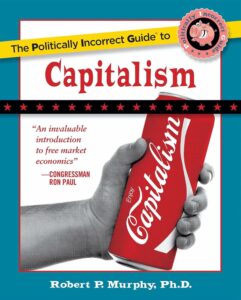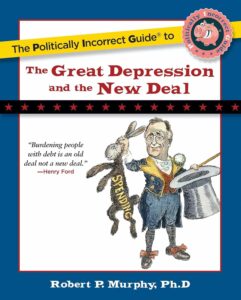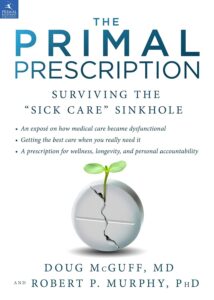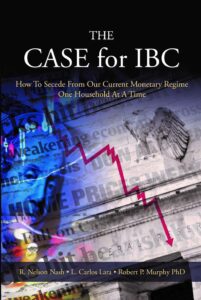Potpourri, Peter Schiff Edition
==> The blogosphere is full of claims that he got “pwned” by Scott Sumner in this exchange on Kudlow. I don’t see how. Sumner said that if the official (price) inflation numbers were bogus, then that would mean the real economy was shrinking. Such a claim has always astounded me; I can’t believe libertarians find it so compelling. Schiff came back and said, “The reason it feels like a recession to most people is because it is.” I don’t endorse human bondage, but that sounded like pwnage to me.
==> Incidentally, Scott Sumner has no problem challenging the government’s official numbers, just so long as doing so meshes with his worldview. But if it’s an Austrian person challenging the numbers, he’s a flat earther.
==> Peter Schiff doing stand-up comedy. I was ready to pooh-pooh this, as it brushes up against my turf, but I have to admit this is pretty good. But he’s still staying in his comfort zone and talking about economic/financial stuff. I will truly applaud Peter when he can get laughs talking about his wife’s nagging or something. (BTW I met her on a cruise where Peter and I were speakers, and she is awesome. I’m just giving an obvious example of non-economic guru comedy.)
==> You know you’ve hit rock bottom when you’re arguing with Noah Smith over Schiff’s pronunciation of “Bernanke.”
I Would Lose My Inflation Bets If They Weren’t Attached to My Neck…
OK a while ago I made a post where I typed in the prices of various items that I (at the time) bought all the time at the grocery store, such as milk and “Goldfish” crackers for my son. I just spent 10 minutes interrogating Google and can’t find it. Does anyone want to put off a project at work and find it for me? I’m worried that maybe it got lost somehow in the great blog migration a while ago.
I’ll Take Their Flying Cars, Then
Apparently David R. Henderson is at least intrigued by Joshua Gans, who writes:
We should question the premise of whether we want flying cars. We would like quicker and less constrained options from getting from A to B but flying around in a car, while it may be a representation of the future with such freedom, when you think about it, cannot really deliver that value, at least in cities. Indeed, the fact that flying cars do not exist where they might be of value — in less dense areas — leads us to question whether people want them at all. This is at least enough to give us pause on the issue.
I was going to give a dry economic analysis, explaining that densely populated cities would be the first place to see highways in three dimensions, just like you’d expect big cities to use skyscrapers and elevators more than densely sparsely populated regions. But instead I’ll just post this video; just watch a few seconds from the middle of it and you’ll get the idea:
“Sweet Caroline” from the Grassy Knoll
You can’t see the size of the crowd, but the audio quality is better. My enthusiasm makes up for my vocal deficiencies.
Second Chance: I Do “Sweet Caroline” Again at Mises U With Fly By Radio
As I explained on Facebook, at this rate I will hit all the notes by Mises U 2024:
Is It Better to Malinvest During a Recession?
Evan Soltas (HT2 Scott Sumner) writes a more balanced view (compared to Matt Yglesias, who called Summers a communist) on Larry Summers allegedly problematic concern over low interest rates leading to malinvestments. To refresh your memory, here is what Summers said back in 2012, that is now causing a lot of people to flip out since he might be Bernanke’s successor:
Many in both the U.S. and Europe are arguing for further quantitative easing to bring down longer-term interest rates. This may be appropriate given that there is a much greater danger from policy inaction to current economic weakness than to overreacting.
However, one has to wonder how much investment businesses are unwilling to undertake at extraordinarily low interest rates that they would be willing to undertake with rates reduced by yet another 25 or 50 basis points. It is also worth querying the quality of projects that businesses judge unprofitable at a -60 basis point real interest rate but choose to undertake at a still more negative real interest rate. There is also the question of whether extremely low safe real interest rates promote bubbles of various kinds. [Bold added.]
Now in reaction to the above Summers quote, Soltas first concedes (unlike Yglesias et al.) that it’s not just those wacky Austrians who think interest rates might have something to do with the sustainability of investment projects:
[Summers’ argument] is one of the most common…against monetary accommodation. It deserves a little more destruction than O’Brien and Yglesias give it with the “Austrian” and “socialist” labels.
Let’s start with what we know. An investment project requires a large downpayment made with borrowed money with the intention of recouping that money with future revenue. The way that economics thinks about investments is through cash flow — that is, the net of how much the business would take in and lay out. In the beginning, this is going to be negative, as investments in equipment and construction exceed revenues. As time passes, it’ll turn positive.
…
It’s possible that an investment has a positive net present value at a certain interest rate (a low one), but has a negative net present value at another, higher rate. So if all else is equal, Summers is right: If the central bank holds interest rates artificially low, it can in fact induce malinvestment — the central bank is creating an incentive to invest in projects which have negative net present values at normal interest rates. If the cost of capital was to fall below the internal rate of return, then that may generate a misallocation of resources.That’s a bad thing, and it’s not “Austrian” to fear that. Nor is it the irrational response of a private sector to malinvest under those conditions.
Right off the bat, I’m already worried. Soltas says “it’s possible” when he should say “it’s mathematically certain.” (If the negative and positive cash flows alternate, then you can get the weird “reswitching” stuff, but even in those cases, strictly speaking Soltas’ “it’s possible” scenario will be true in every single case.) So as I say, I’m already worried that this basic stuff is being treated as almost an interesting thought experiment that Summers has raised.
OK but put that quibble aside. At least Soltas agrees with the Austrians (and Larry Summers) that the central bank shouldn’t be encouraging projects in unusual times that won’t be sustainable once we return to normalcy. Oops, except he’s not. Here’s his explanation:
But all else isn’t equal, and I’ve been meaning to point out this error for a very, very long time to others. So here’s the thing about recessions: They reduce businesses revenue. They do so for the short run, and perhaps the medium run. That, by definition, reduces internal rates of return across prospective investments. If expected future revenues fall and the central bank doesn’t adjust the interest rate, in other words, it’s misallocating resources, but just in a different way.
This isn’t an idle fear. I’ve sung a lonely chorus for a year or so now arguing that economic commentators have underappreciated the role of expectations…
This evidence suggests Summers has this backwards. Recessions appear to be about internal rates of return dropping suddenly below the cost of capital, and everyone trying to exit their investment and deleverage at the same time….If you think about a roster of investments ranked in order of their internal rates of return, recessions seem to create a sudden jump in how many of those investments would be “underwater.”
Here’s a simple example. Suppose that you’re starting a business. It requires a $10,000 upfront investment in the first year. You’ll make no revenue then, either. Then you expect it to bring in $1,000 in positive cash flow for the next 29 years. That’s an 8.4 percent internal rate of return.
But, woah, here comes the recession! Now you’re expecting the first three years that had positive cash flow to be zero instead. Now the net present value, at the current rate, is -$2,475. Yikes! You’ll liquidate the investment rather than take a loss like that. Trouble is, if everyone does this, it’s a problem. So the central bank should cut the cost of capital from 8.4 percent to 6.4 percent. (And had it made clear it would have done this in the beginning, none of this would have happened in the first place.)
First two quibbles: (1) I’m getting internal rates of return closer to 9.23% and 6.71%, which is way different from Soltas (especially the first one). Can anyone else reproduce his numbers?
(2) Once the project is up and running, with the $10,000 being a sunk cost and now the project offers a stream of $1,000 payments starting in 3 years, why would the owner liquidate it? By “liquidate” does Soltas really mean “not start the project”?
Beyond these quibbles, my main point: Soltas’ argument only makes sense if the recession is something that the central bank should solve by cutting interest rates and encouraging people to continue making the same pattern of investments as before the recession hit. (He doesn’t spell it out, but implicitly Soltas must be arguing something like this: If the central bank cuts the interest rate enough, then everybody continues investing, so Aggregate Demand has no reason to fall, and then the investment project returns the $1,000 each year just like it was supposed to. The recession is cured, and the central bank can raise rates back to where they were.)
Yet hang on a second. Suppose for a second that the Austrians were right, and that the reason we have a recession isn’t simply (a la Scott Sumner) that the markets suddenly, and for no good reason whatsoever, just decide to anticipate the slowest NGDP growth since the early 1930s–and then the Fed renders their prediction true (again, for no exogenous reason whatsoever).
In contrast to that Sumnerian explanation (and yes I’m exaggerating to make the distinction), the Austrians explain that a recession occurs when a bunch of entrepreneurs realized they had previously engaged in malinvestment. What for Soltas is “normal times” is actually the unsustainable boom for the Austrians. Soltas wants to prod entrepreneurs to keep investing like it’s 2005, when the Austrians are saying no, there were artificially low interest rates back then.
In case it’s too hard to grasp all of this at a macro level, do it at the individual firm level: Just one entrepreneur thought he could open a franchise restaurant by plunking down $100,000 today, then earning a net income of $10,000 annually for the next 29 years. At this internal rate of return of 9.23%, and with a market interest rate of 8%, he went ahead and started the project.
But the guy was wrong; the people in Auburn AL just weren’t ready for that much sushi. After his experience with this first attempt, the guy now projects that his next target franchise in Birmingham, AL will still require $100,000 today, but then $0 for the next three years, followed by a stream of $1,000 $10,000 net income earnings through the 30th year. With interest rates this high, clearly he won’t do it. So, should the Fed cut interest rates enough to make him open that second restaurant in Birmingham? Of course not.
I realize there are “fallacies of composition” and so forth in macroeconomics, but sometimes microeconomics does extrapolate. If it’s dumb for the Fed to cut interest rates to encourage an entrepreneur to tie up resources in a project that doesn’t offer positive present value, maybe it’s a bad idea for the Fed to do that with millions of entrepreneurs during a recession, when people have legitimate reasons for changing their spending patterns and previous forecasts of demand may have been wildly off.
Why Maiden Lane?
I am using this excellent J.P. Koning post (at Nick Rowe’s hangout) for an upcoming paper, but I wanted to draw everyone’s attention to this interesting fact:
There is also a not-so-well known legal route by which the Fed has purchased assets in the past. The restrictions set by Section 14 [of the Federal Reserve Act] clearly prohibited the massive Fed purchases of all sorts of private assets during the 2008 crisis, including private label RMBS (much of it subprime), CDOs, CMOs, ABS, swaps, whole commercial mortgage loans, and asset-backed and unsecured commercial paper. Furthermore, in many cases these purchases were often not made in the open market, but directly from distressed banks. (Bear Stearns and AIG)
In announcing its purchasing programs in 2008, the legal route taken by the Fed invariably drew on section 13.3 of the Federal Reserve Act. But oddly, Section 13 sets out the rules and regulations regarding Fed loans, not purchases. Section 13.3 is an incredibly open ended passage, allowing the Fed to lend to any individual, partnership, or corporation upon any collateral the Fed deems satisfactory.
Over the course of the crisis, the Fed mobilized 13.3’s lending powers so as to justify purchases by creating five separate Delaware limited liability companies: Maiden Lane LLCs I, II, and III, Commercial Paper Funding Facility LLC (CPFF), and Term Auction Lending Facility LLC (TALF). It lent to these corporations under the authority of Section 13.3. These LLCs proceeded to use these funds to purchase assets not specifically authorized by the Federal Reserve Act.
In short, the Federal Reserve attempted to get around the limitations concerning asset purchases found in Section 14 by lending under the much broader Section 13.3 to the five recently created LLCs it controlled, and ordering these LLCs to purchase whatever assets it deemed necessary. Presumably as long as the LLCs were doing the purchasing, and not the Federal Reserve itself, Fed lawyers felt that Section 14 was not being violated.
Dubious? It would take a court of law to determine how legal the entire range of transaction conducted though these LLCs was. Certainly it seems to have violated the spirit of the law, though perhaps not the letter. [Bold added.]
Yet Another Odd Complaint Against Religion
There’s a new thingie (I refuse to use the word “meme”) floating around Facebook telling the story of a new pastor who dresses as a homeless man and goes to his new church, with only the church elders in on the secret. As you might expect, he is shunned by his new flock, and the ushers ask him to sit in the back. The elders introduce the new pastor to the church, and they start applauding and looking around for the guy to walk in. Then the “homeless” guy walks to the front, gets up there, and starts reciting Jesus’ words:
34 Then the King will say to those on His right hand, ‘Come, you blessed of My Father, inherit the kingdom prepared for you from the foundation of the world: 35 for I was hungry and you gave Me food; I was thirsty and you gave Me drink; I was a stranger and you took Me in; 36 I was naked and you clothed Me; I was sick and you visited Me; I was in prison and you came to Me.’
37 “Then the righteous will answer Him, saying, ‘Lord, when did we see You hungry and feed You, or thirsty and give You drink? 38 When did we see You a stranger and take You in, or naked and clothe You? 39 Or when did we see You sick, or in prison, and come to You?’ 40 And the King will answer and say to them, ‘Assuredly, I say to you, inasmuch as you did it to one of the least of these My brethren, you did it to Me.’
41 “Then He will also say to those on the left hand, ‘Depart from Me, you cursed, into the everlasting fire prepared for the devil and his angels: 42 for I was hungry and you gave Me no food; I was thirsty and you gave Me no drink; 43 I was a stranger and you did not take Me in, naked and you did not clothe Me, sick and in prison and you did not visit Me.’
OK a pretty neat story, right? I doubt it’s true; here’s Snopes’ take on it. (And incidentally, I don’t doubt that a Christian congregation would be rude to a homeless guy who walked in to their Sunday service. Rather, I doubt that a new pastor would be that bold when he’s trying to assume a leadership position with people who don’t know him.)
Now the funny thing is, I came across this story by a Facebook friend who posted it with the comment: “Religion is s**t. Just be a better person.”
Now let’s think about this for a second. Does anybody doubt that if a homeless person tried to go to any type of social gathering of atheists–except for a soup kitchen’s anniversary party that happened to be run by atheists–that they would be bummed out and wish the guy would leave? For heck sure if it were a group of Randians, they wouldn’t embrace the guy with open arms and share a cigarette with him.
The reason this story is compelling, is that the Christians all pledge allegiance to someone who explicitly taught them to care for the poor, the imprisoned, the sick, etc. So if the story were true (which I doubt that it is), the congregation in question would burn with shame. In contrast, there is nothing analogous for a group of atheists who treated (say) their new CEO poorly, if he dressed up like a homeless guy. All he could do is get up there and say something like, “Hey, I expect you guys to be better citizens if you’re going to work for this company. We only want socially conscious people on this team.” That wouldn’t be nearly as powerful and burning of their consciences.
Now I now full well that people are going to say the difference is hypocrisy. But no it really isn’t, not in this case. If a pastor gets caught with a prostitute, then heck yes THAT is hypocrisy, because Christians say they disagree with the sexual mores of the culture, and they browbeat others for sexual promiscuity etc. Thus, if a Christian gets caught doing the very thing he complains about, then that’s hypocrisy.
But that doesn’t really work in this alleged case of the homeless pastor. It’s not as if Christians go around condemning atheists to hell for not doing enough to help poor people. And, the concern for the homeless isn’t a uniquely Christian hangup, the way “the traditional family” is. Indeed, the person on Facebook agreed that “being a better person” meant helping a homeless guy and not ignoring him.
So I really don’t see why this story should be considered a strike against religion. It’s akin to a guy in AA falling off the wagon at a party, and then being shocked to discover that this sponsor is standing right next to him. Would such an anecdote prove the 12-step program is s**t?
Now what could make sense is if you presented me with evidence that on average, Christians (or “religious people” if you want to make it broader) don’t donate to charities or do volunteer work etc. more than atheists. (I don’t know if they do or they don’t; I’m willing to look at studies if people want to put them in the comments.) Then you could reasonably conclude, “Hey, it looks like this ‘belief’ in Jesus comes with no actual change in behavior.”
In any event, I will say this: When I went to Haiti after their earthquake (and I went with a secular organization FYI), in the airport terminal on the way back, it was chock full of teams sent by their churches in the US.







Recent Comments